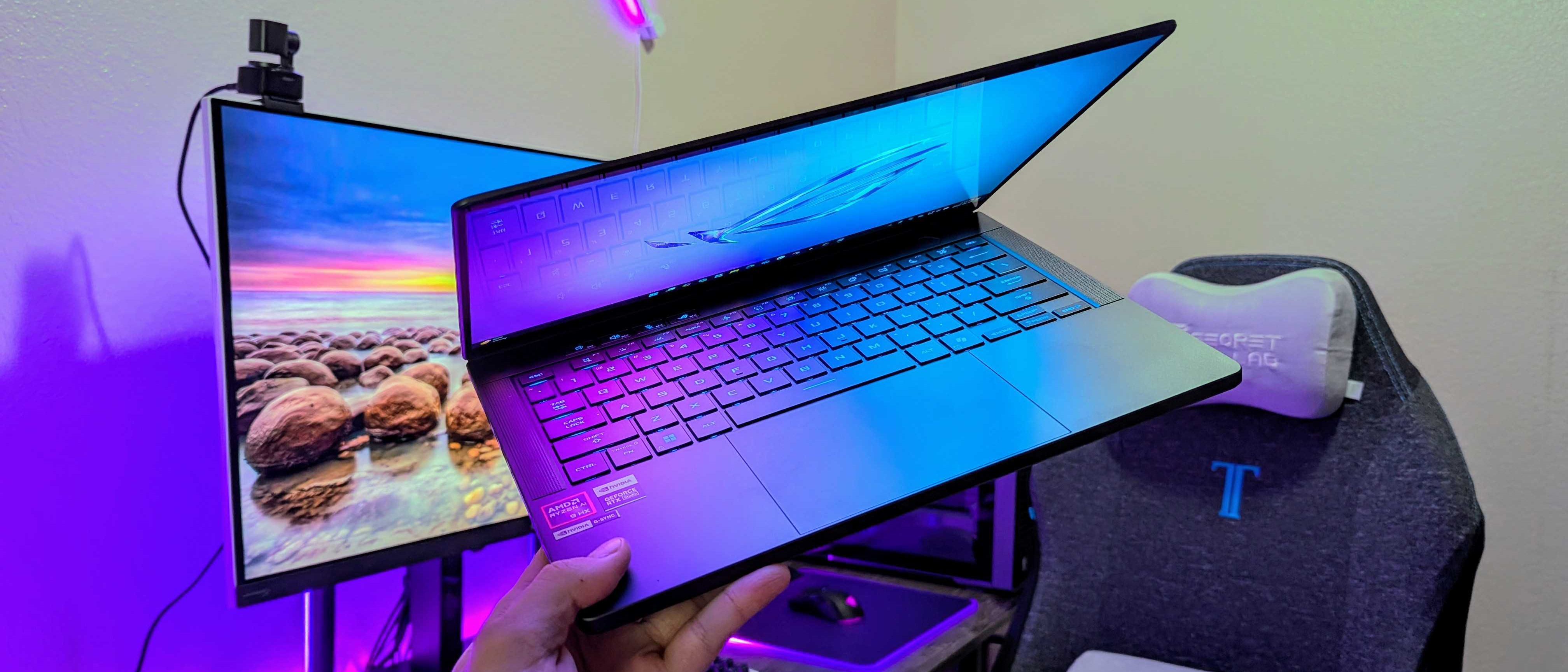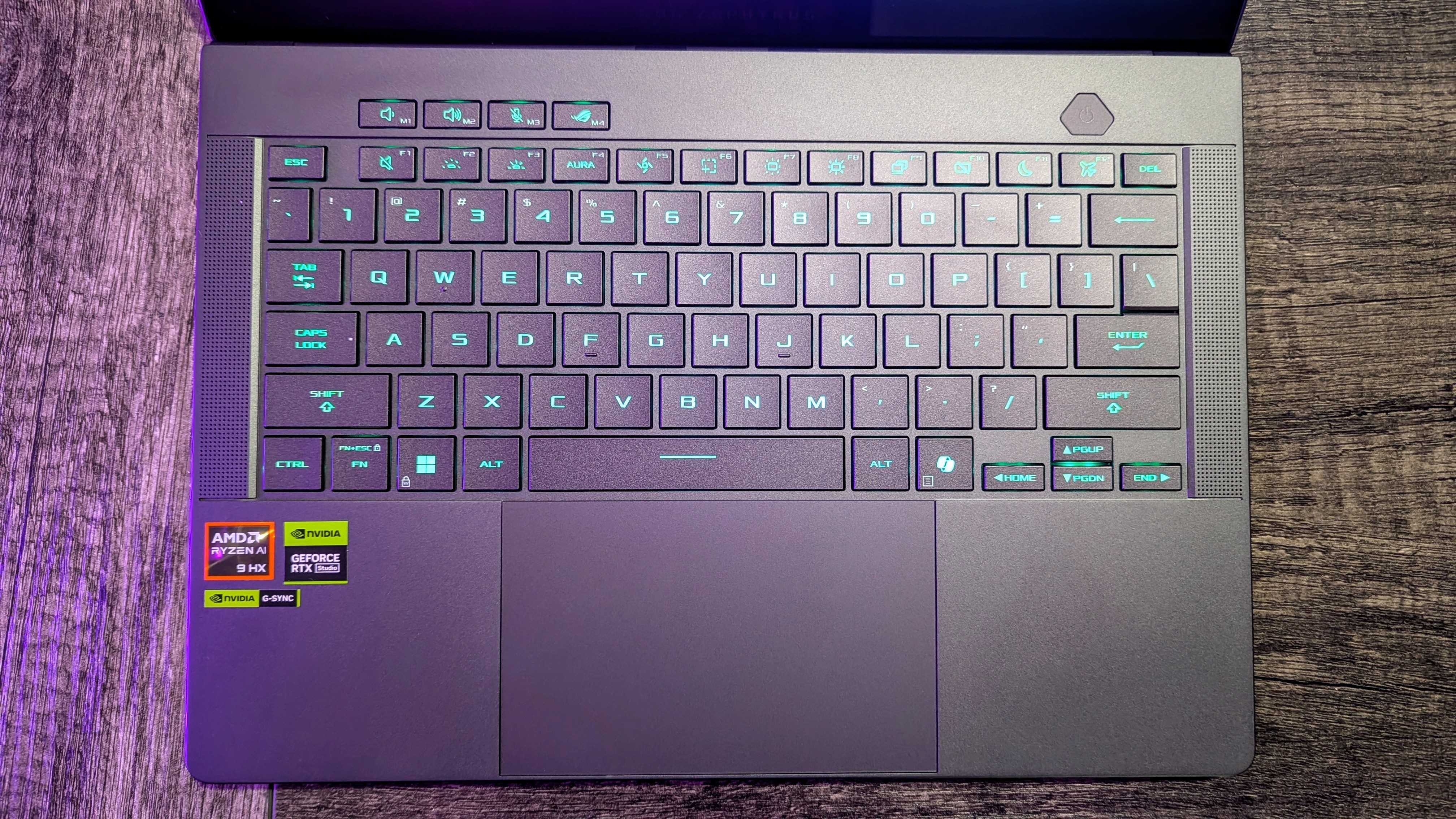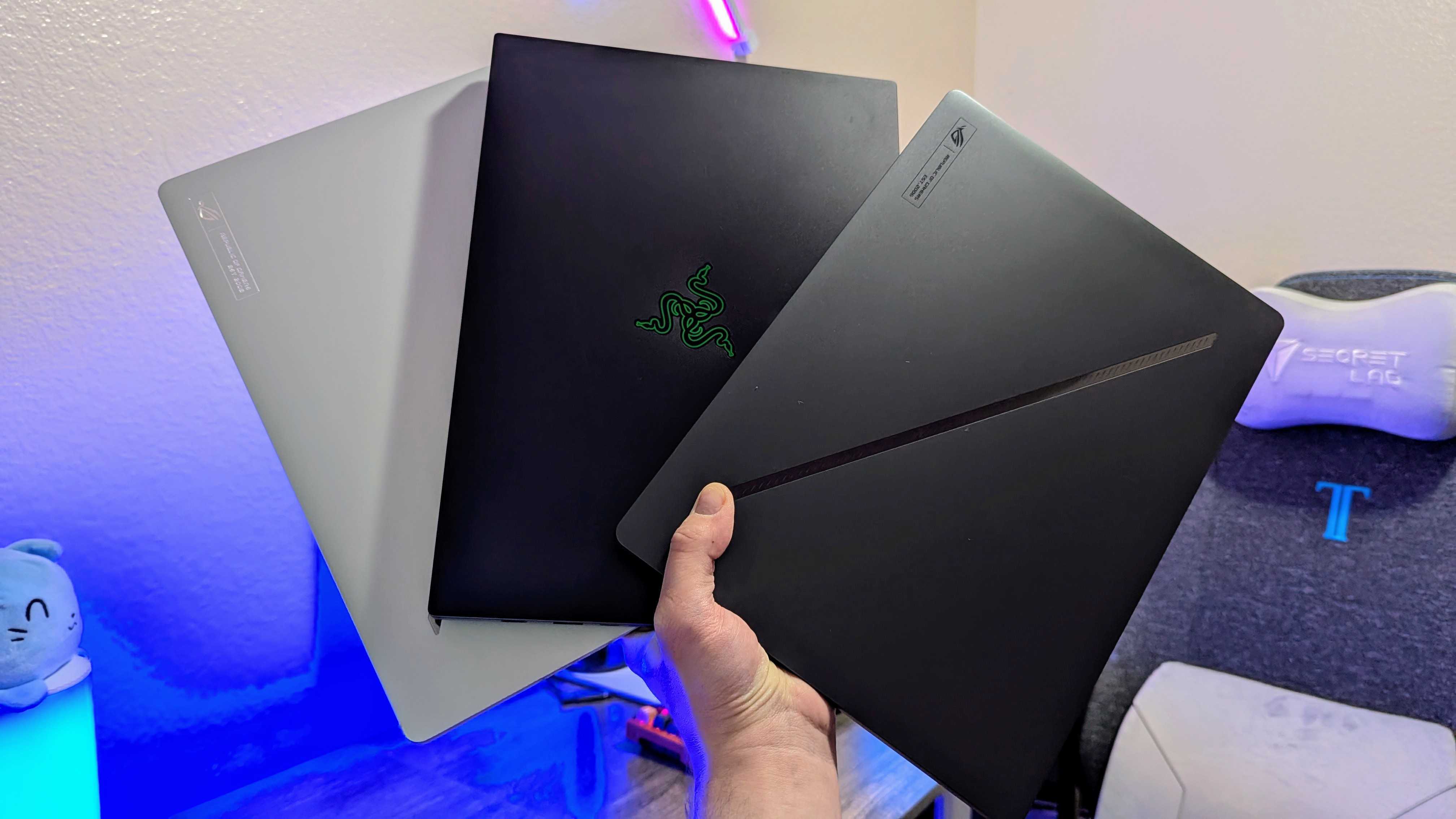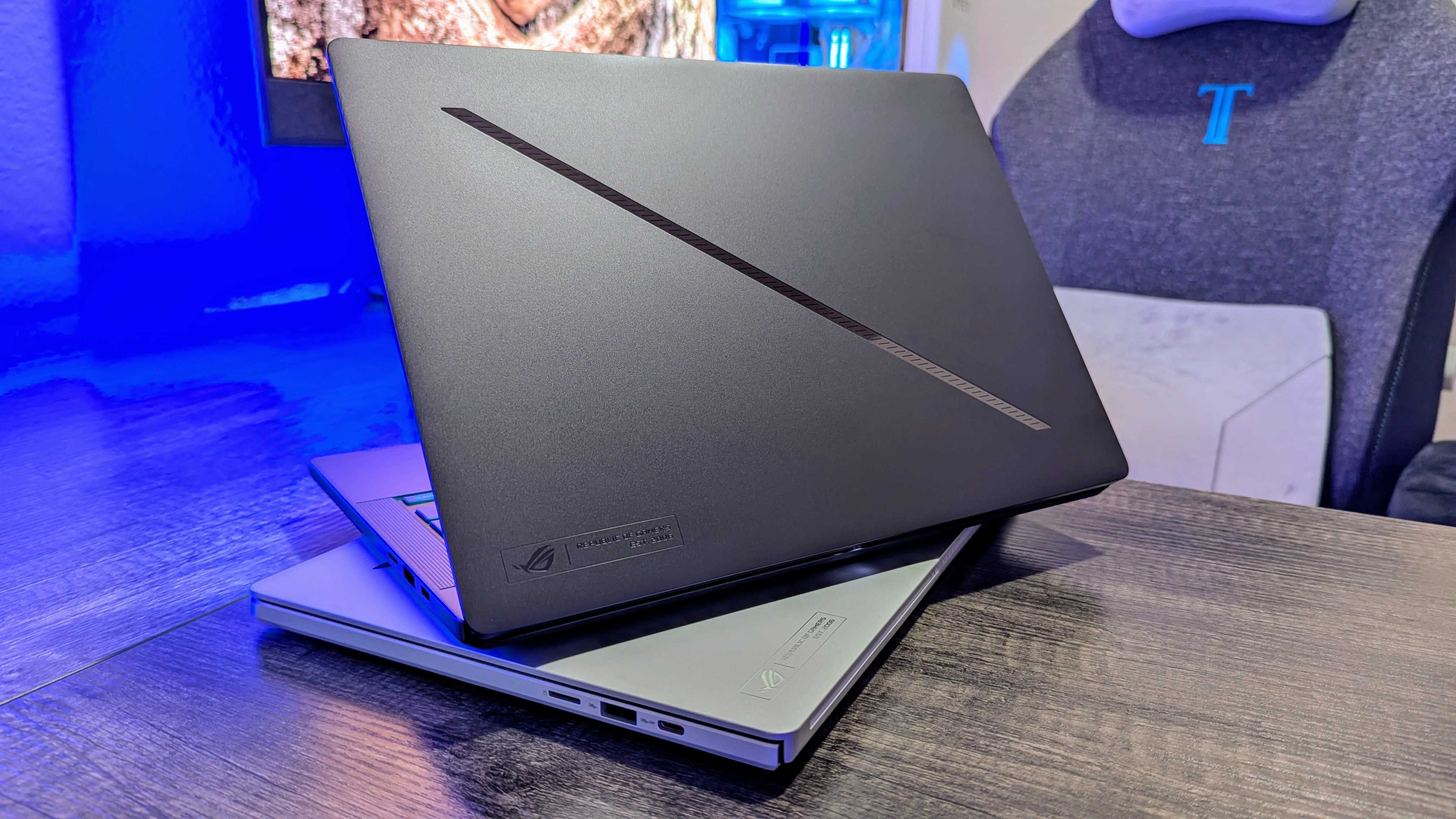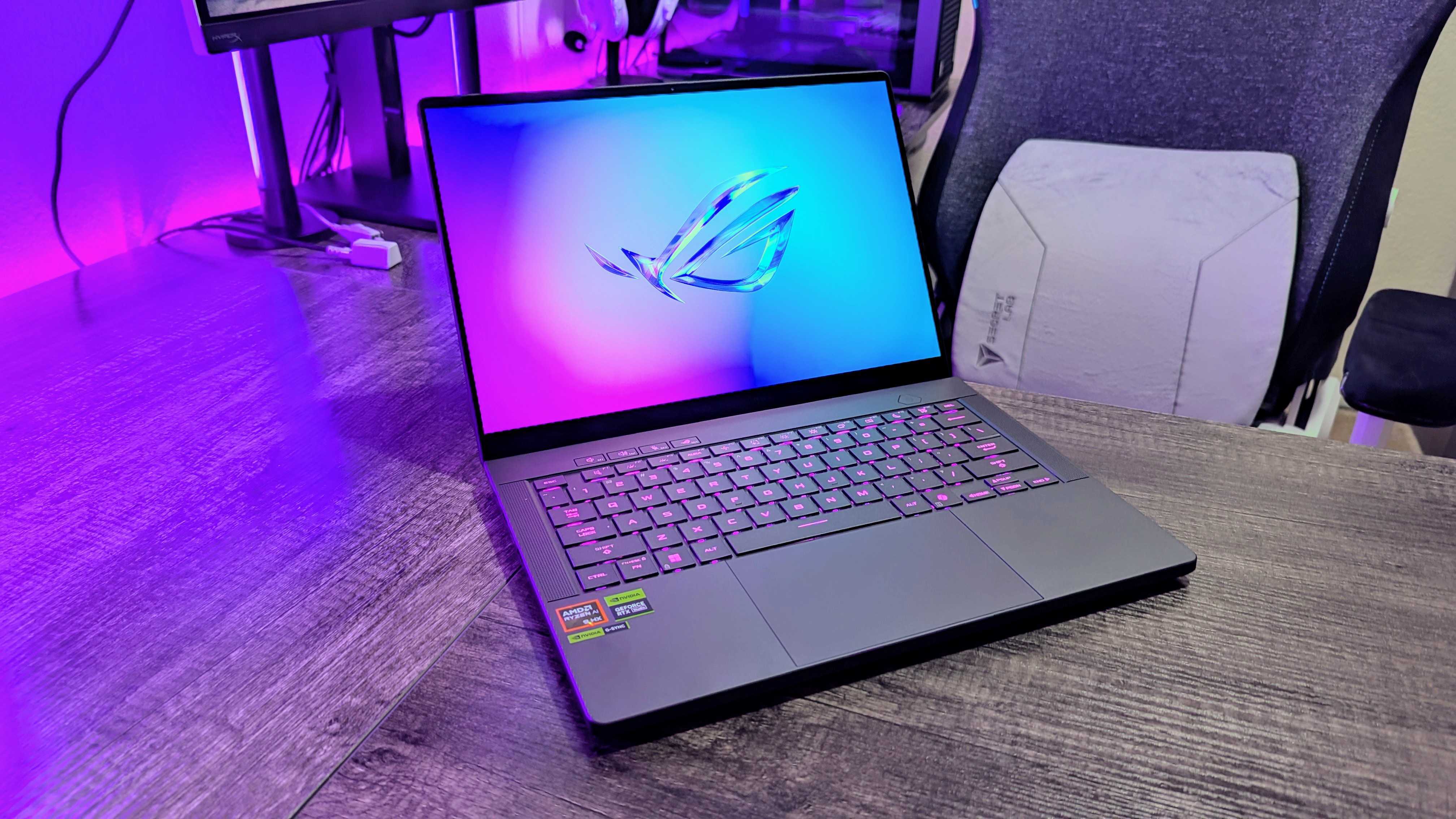Windows Central Verdict
ASUS knows it struck gold, and didn't mess too much with the winning formula of the ROG Zephyrus G14 for 2025. Much of the hardware is identical, but this laptop is now smarter and more powerful... and thicker, heavier, and more expensive. Not everyone will love that added mass, but there's no denying the Zephyrus G14 is still one of the most impressive and premium 14-inch gaming laptops you can buy.
Pros
- +
Same premium hardware packed with features
- +
Excellent performance with reliable thermal management
- +
Great keyboard and speakers
- +
There's still a more affordable, sleeker version
Cons
- -
More power = thicker and heavier
- -
More expensive overall
Why you can trust Windows Central
It took far too long for me to get my hands on the brand-new ASUS ROG Zephyrus G14 (2025), but I'm finally here.

In my ASUS ROG Zephyrus G14 (2024) review, I praised ASUS for deliberately sacrificing some raw performance in pursuit of a more balanced, premium, and portable design — while still offering great value compared to Razer. It was one of my top laptops of last year, and remains a stellar buy if you find it on sale.
My excitement was palpable when I initially went hands-on with the new Zephyrus G14, but you could also feel my apprehension at the apparent shift in focus.
So much of what made this laptop so amazing last year is still here, only now it's smarter and more powerful — so, what's the deal? It's that ASUS is seemingly walking back some of the decisions it made with last year's laptop, for better or worse.
The ASUS ROG Zephyrus G14 (2025) brings AMD Ryzen AI and NVIDIA GeForce 50-series hardware under its wing, and it succeeds at surpassing the current Razer Blade 14 at every turn performance-wise. The trade-off is more weight, thickness, and price, however, and I'm conflicted on whether ASUS made the right decision or not.
No matter my feelings, though, this is still one of the best Windows laptops of the year, especially if you want a sleek 14-inch machine with some monstrous power under the hood.
My ASUS ROG Zephyrus G14 (2025) review
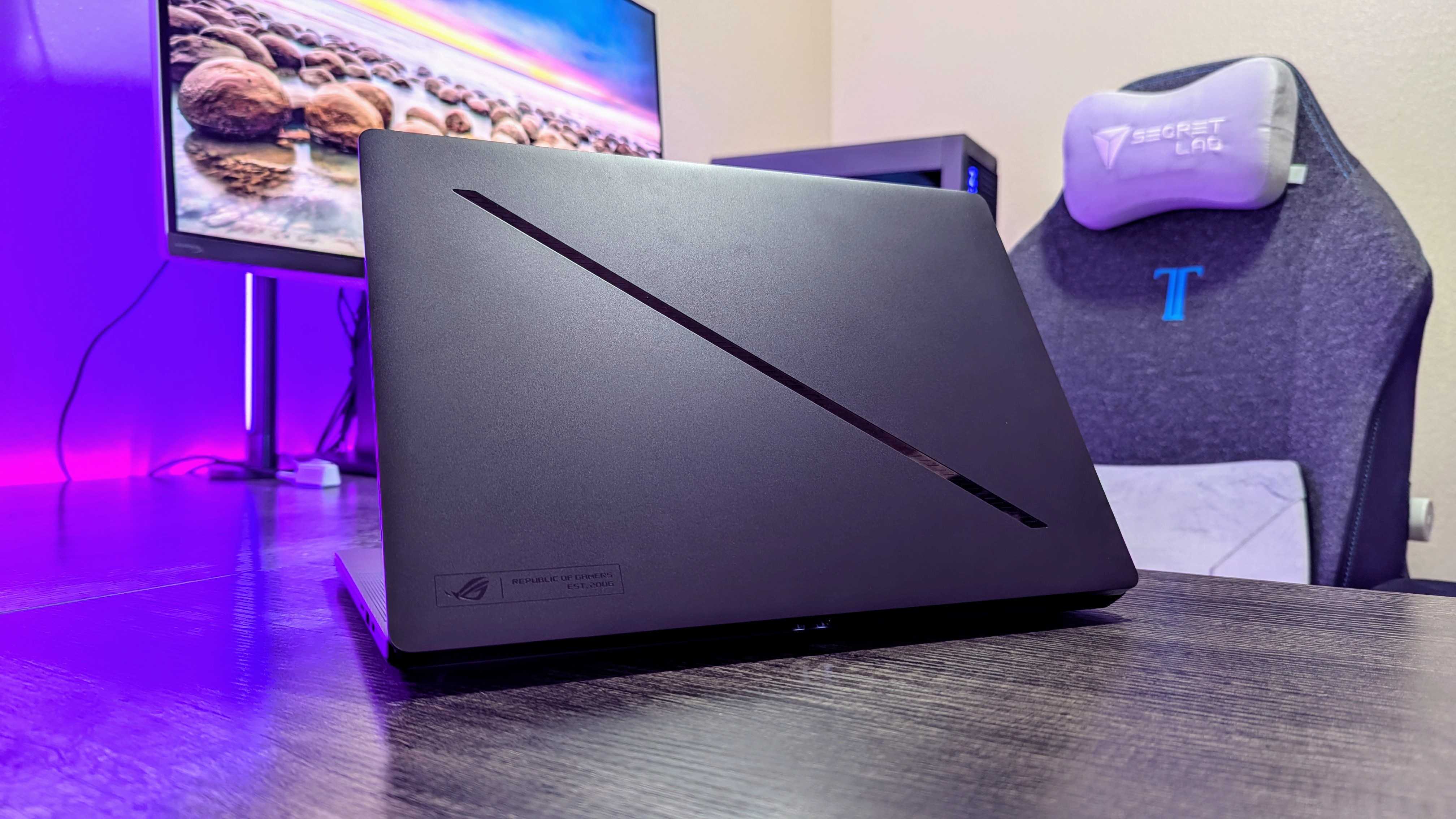
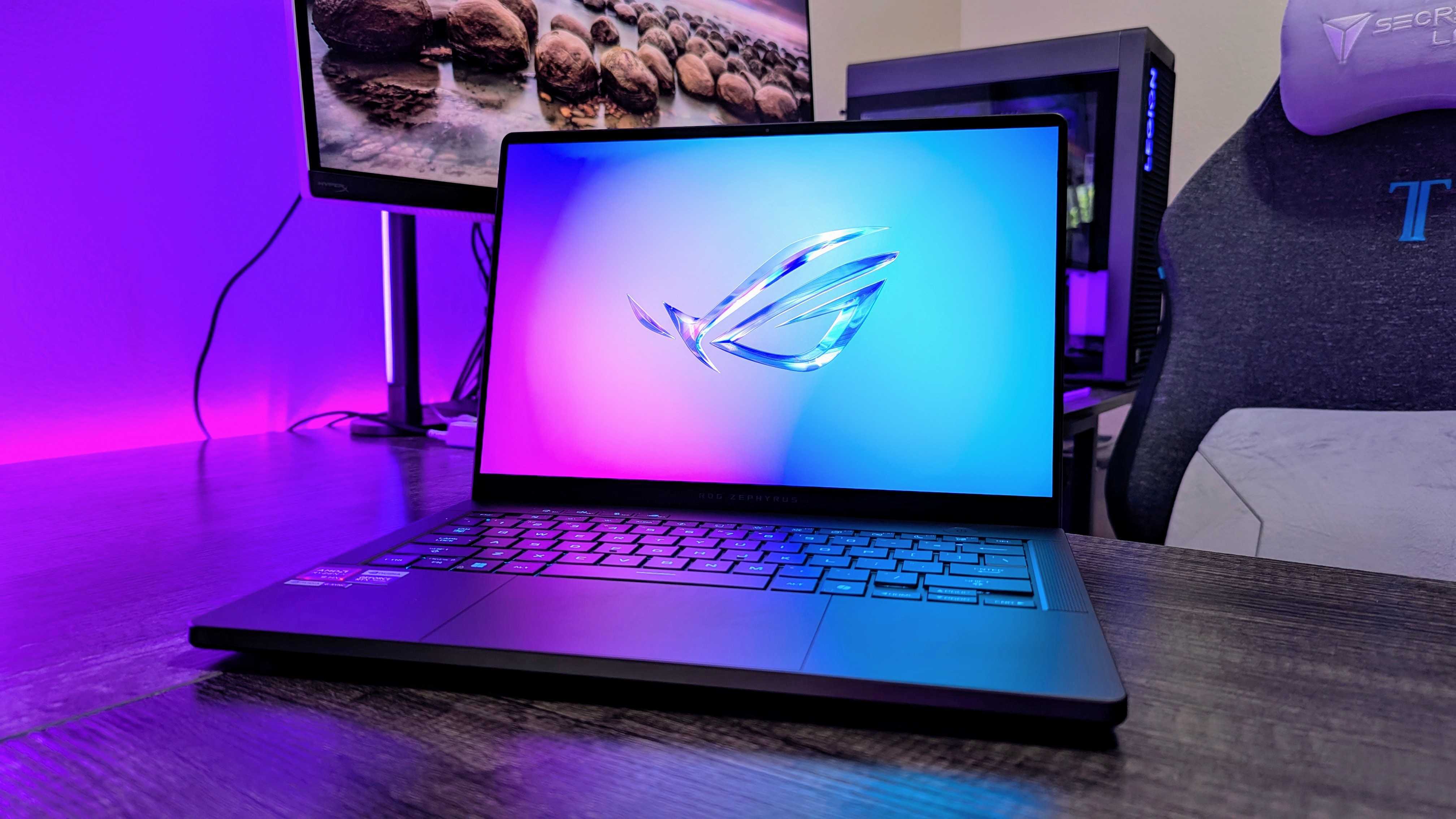

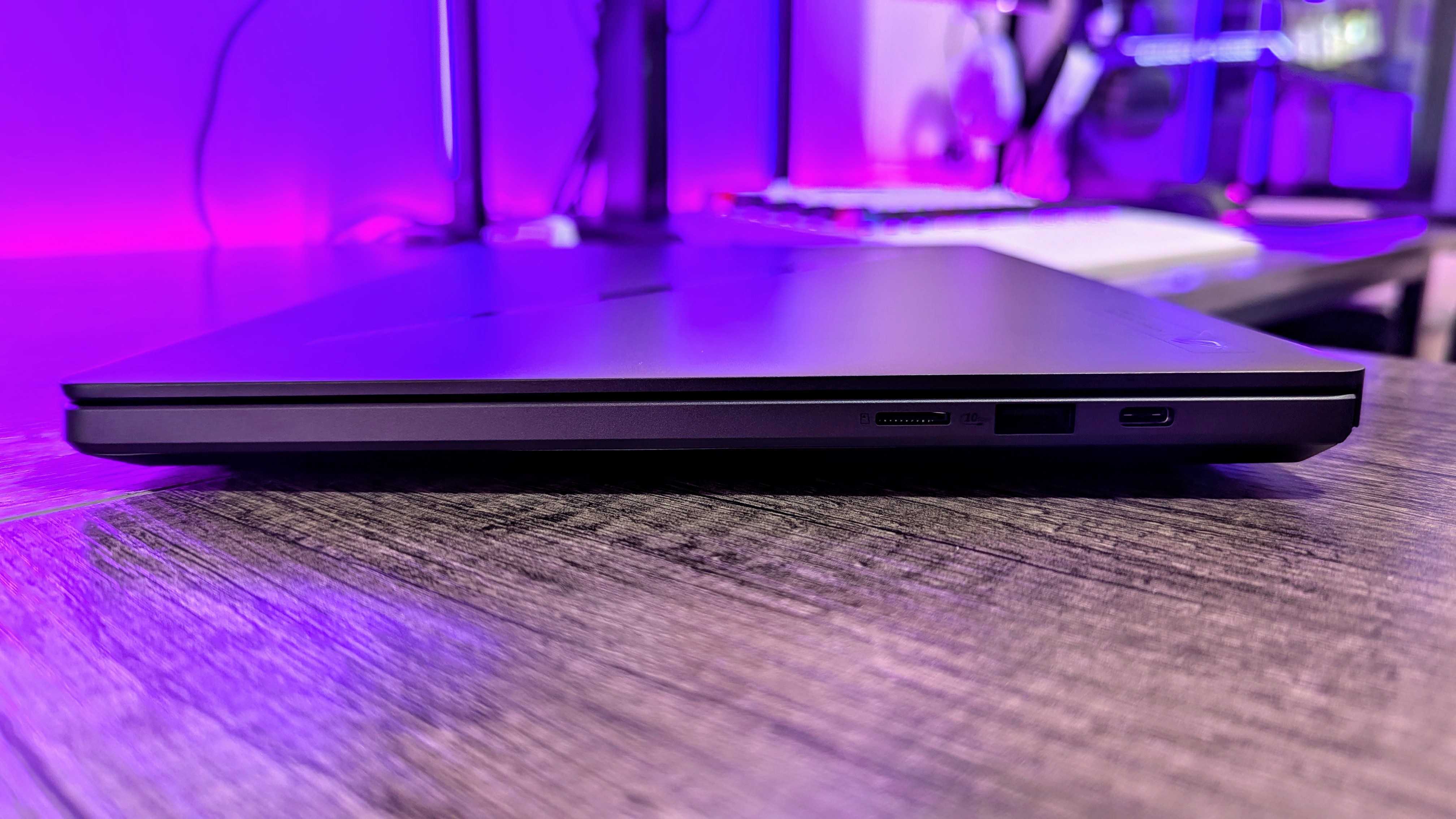
Design ⭐⭐⭐⭐½
The ASUS ROG Zephyrus G14 hasn't changed much for 2025, with the same sleek aluminum chassis. This time around, however, its redesigned thermal shelf makes the rear two-thirds thicker (18.3mm versus 16.3mm) and the laptop overall heavier (1.57kg versus 1.5kg).
We do get the same port selection, though, with 1 USB4 (40GBps, DisplayPort, 100W Power Delivery), 1 USB Type-C (10GBPs, DisplayPort, 100W Power Delivery), 2 USB Type-A (10GBps), 1 HDMI 2.1, 1 microSD card reader (UHS-II), and 1 3.5mm audio jack.
All the latest news, reviews, and guides for Windows and Xbox diehards.
If you don't mind a little extra mass and wanted a lot more power, ASUS made all the right decisions with this year's Zephyrus G14.
I would've preferred both USB Type-C ports be USB4 with Thunderbolt 4 compatibility, and I'm still not entirely convinced ASUS made the right decision in making the Zephyrus G14 thicker and heavier — but it's attractive (and now comes in dark and light colorways), built extremely well, and every bit as premium-feeling as a ~$2,000 laptop should be.
Display ⭐⭐⭐⭐
ASUS also didn't change the display with the new Zephyrus G14, so we're still getting the same "Lumina" flavor of the 14-inch, 2.8K, 120Hz OLED screen we've seen in so many premium laptops.
It's vibrant, responsive, color accurate (at least 100% of sRGB and DCI-P3 color gamuts), and supports Dolby Vision HDR — perfect for working, creating, playing, and watching. This display's strengths are well known at this point, but so are its weaknesses.
It's not the brightest at around 400 nits, but it's good enough. It does use Pulse-Width Modulation (PWM) for dimming, so people who are sensitive to flickering will have to avoid it. ASUS also took away software options for customizing the display and OLED care features, which helped its displays stand out.
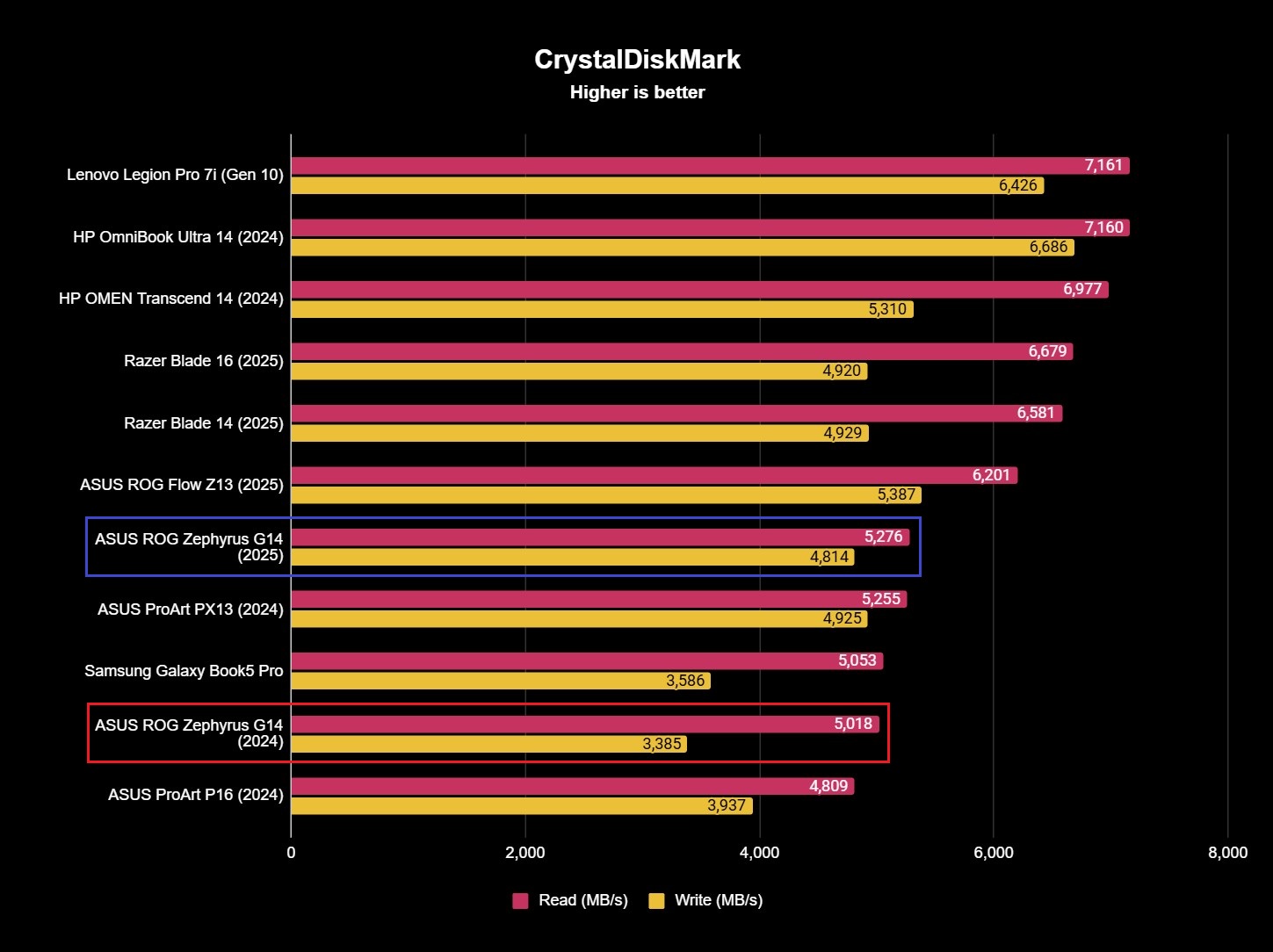
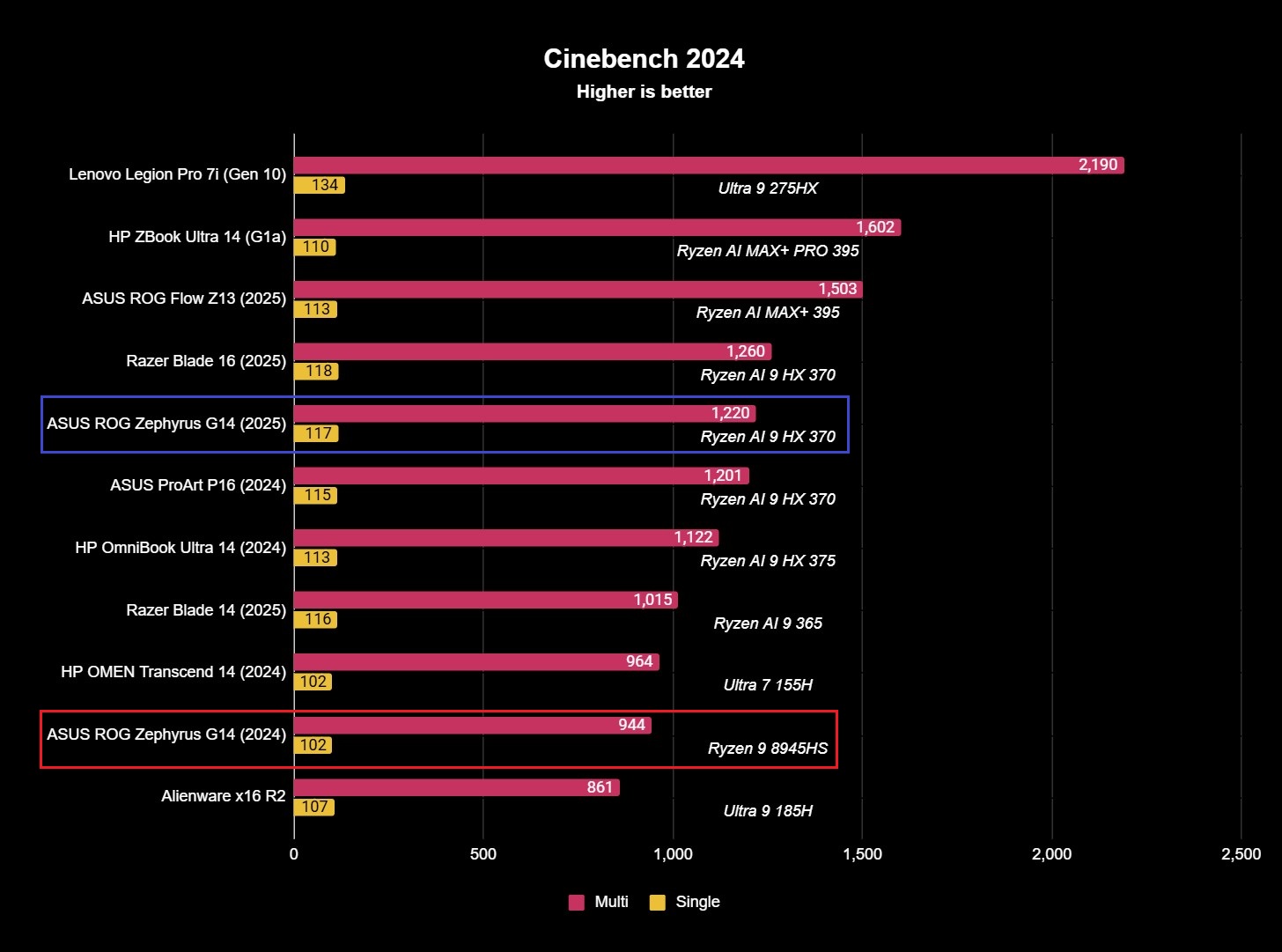
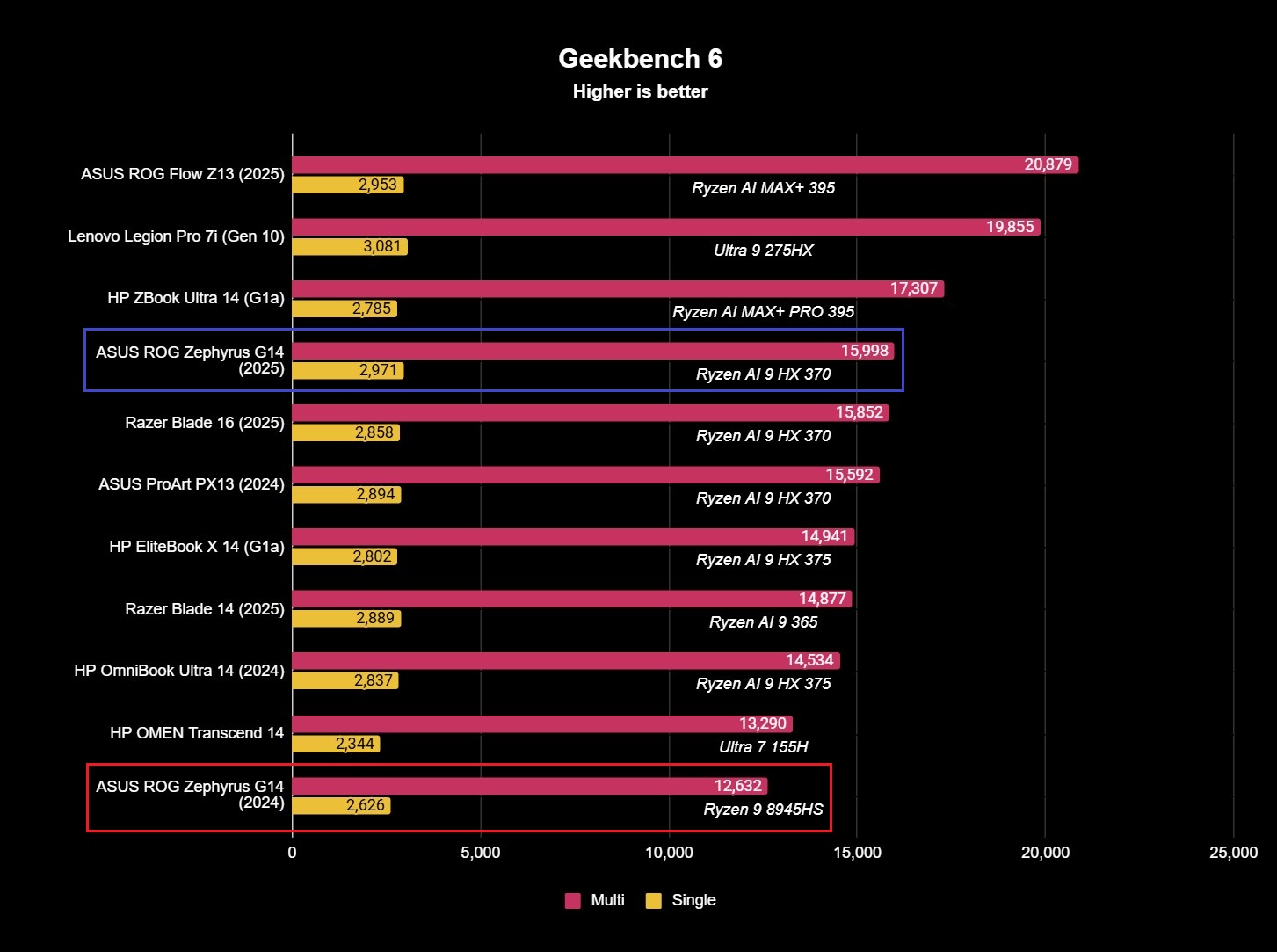
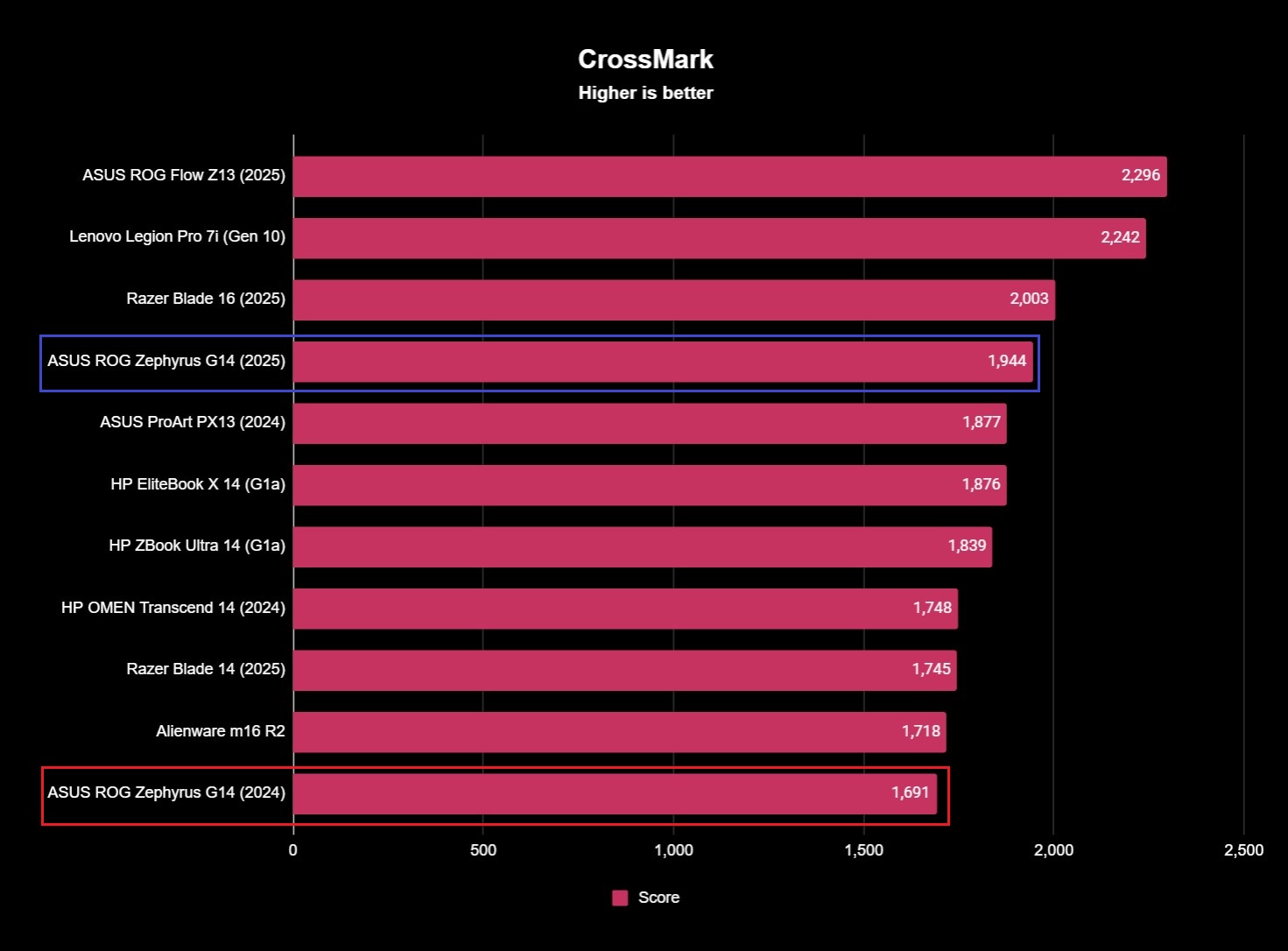
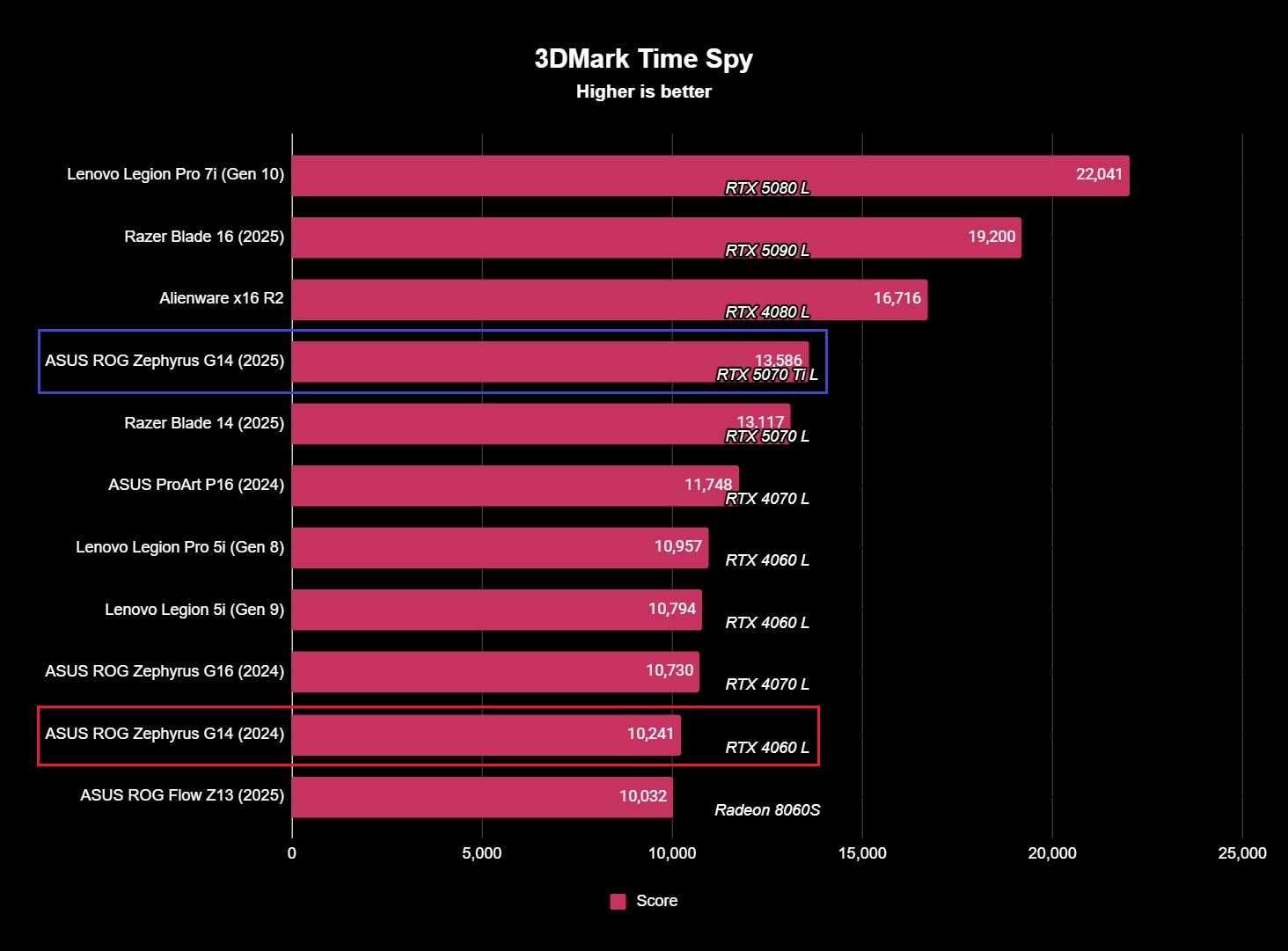
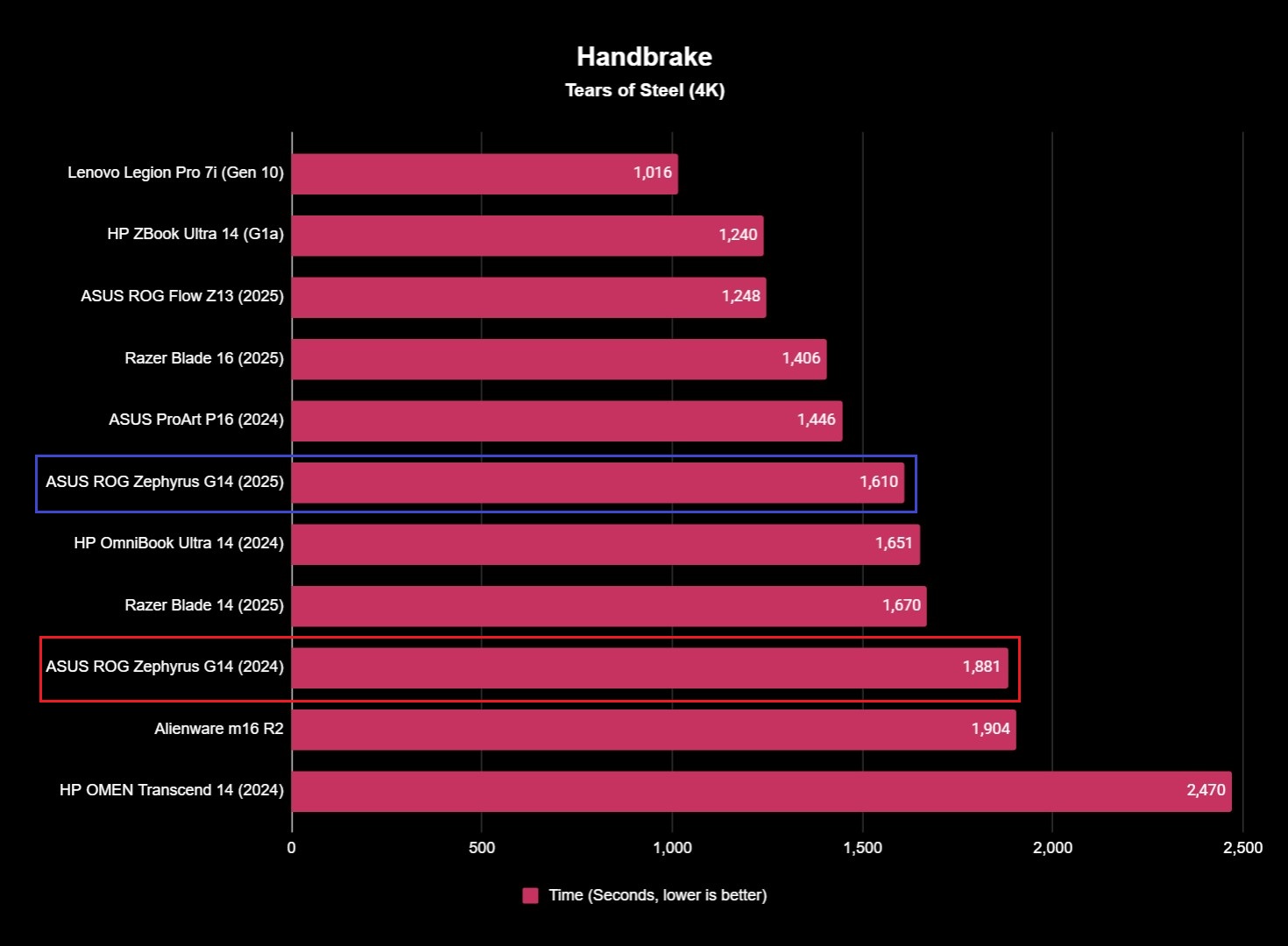
Performance ⭐⭐⭐⭐½
To the surprise of absolutely no one, the ROG Zephyrus G14 is a strong performer, thanks to the AMD Ryzen AI 9 HX 370 and up to an NVIDIA GeForce RTX 5080. Yes, 5080, because that's necessary in a 14-inch gaming laptop (no it's not, don't waste your money on that configuration).
You also get up to 64GB of soldered LPDDR5X RAM at 8,000MHz and 2TB of PCIe Gen4 SSD storage. This laptop is responsive no matter what you throw at it, and has more than enough firepower to play all the latest games or handle intensive workloads.
There's no denying how much power the new Zephyrus G14 delivers in such a small package, even if I personally prefer the more balanced approach from last year.
ASUS' triple-fan cooling system is also remarkably adept at keeping this laptop running in top form. I ran it through 3DMark's Time Spy benchmark 25 times, and it maintained a 99.3% framerate stability (for reference, the Razer Blade 14 scored 99.1%, and both those scores are excellent).
- Forza Horizon 5 — 109 FPS (Extreme preset, 1600p resolution, NVIDIA DLSS Super Resolution/Frame Generation/Reflex Low Latency disabled) | 120 FPS (Max settings, NVIDIA DLSS Super Resolution set to Auto, NVIDIA DLSS Frame Generation/Reflex Low Latency enabled)
- Gears 5 — 81 FPS (Ultra preset, 1600p resolution)
- Call of Duty: Black Ops 6 — 91 FPS (Extreme preset, 1600p resolution, NVIDIA DLSS Super Resolution set to Performance, NVIDIA DLSS Frame Generation disabled, NVIDIA Reflex Low Latency enabled)
- Cyberpunk 2077 — 50 FPS (Ray Tracing: Ultra preset, 1600p resolution, NVIDIA DLSS Super Resolution Transformer Model set to Auto, NVIDIA DLSS Frame Generation disabled, NVIDIA Reflex Low Latency enabled) | 112 FPS (Ray Tracing: Overdrive preset, NVIDIA DLSS Multi-Frame Generation set to 4x, NVIDIA DLSS Ray Reconstruction enabled)
My review configuration is equipped with an NVIDIA GeForce RTX 5070 Ti, and on paper the ROG Zephyrus G14 surpasses the Blade 14 in every single test. When gaming, though, the differences are negligible — until you take advantage of NVIDIA DLSS4 features or need more VRAM.
The Razer Blade 14 caps out at 8GB of VRAM and noticeably struggles with features like Multi-Frame Generation. The Zephyrus G14's 5070 Ti (by the way, that's the configuration I recommend) boasts 50% more VRAM, and it makes a big difference.
The Zephyrus G14 also performs better on battery power with less throttling, at least on the CPU side of things.
Battery life ⭐⭐⭐⭐
Another area that hasn't changed much year-over-year is endurance, which is to say the Zephyrus G14's battery life is good... for a gaming laptop. You get a beefy 73Whr battery and more efficient hardware, so it's very reasonable to get 5-6 hours of screen-on time without disabling features or turning the display brightness all the way down.
The Razer Blade 14 lasts ever so slightly longer, but the G14 also throttles way less on battery power.
Keyboard & touchpad ⭐⭐⭐⭐½
I adored the keyboard on last year's Zephyrus G14, so I'm glad ASUS didn't mess around with it too much. The layout is comfortable and spacious, the keys are clicky and responsive, you get extra macro keys and per-key RGB lighting — it's a nice keyboard.
The touchpad is also pretty great. It's coated with smooth glass, uses Microsoft Precision drivers, and feels both consistent and precise. It's no haptic touchpad, but those are still uncommon (and ASUS as a brand focuses a lot on value).
Software & AI ⭐⭐⭐⭐
Thanks to the new AMD Ryzen AI CPU, the Zephyrus G14 is now a Copilot+ PC. That still doesn't mean much to most people, but AI PCs are slowly becoming more useful as Windows 11 continues to gain more features.
The Zephyrus G14 is still an ultra-premium laptop with all the bells and whistles, but a lot of this hardware is unchanged from last year.
ASUS does preload the Zephyrus G14 with a few too many apps for my liking, but it's easy to trim the unwanted fat and the apps you do need (like Armoury Crate) work well. As I hinted at when talking about the display, though, it seems like ASUS is giving users less control over the Zephyrus G14, with fewer software options to customize your laptop.
Everything else ⭐⭐⭐⭐½
A lot of gaming laptops tend to skim over the "extras," but the ASUS was thorough with making the Zephyrus G14 a premium laptop throughout. That means keeping the fantastic six-speaker system (with Dolby Atmos spatial audio) that blows most other laptops out of the water — including the Razer Blade 14's new six-speaker sound system.
Wireless connectivity has been upgraded to Wi-Fi 7 and Bluetooth 5.4, which is always nice. The FHD webcam isn't anything exceptional, but you do get Windows Hello facial recognition for easy login.
Razer went thin to catch up, ASUS went the opposite direction
When I reviewed the Razer Blade 14 (2025), I commented on how it felt like Razer had finally caught up to ASUS in some ways with a thinner, lighter, faster, smarter laptop with more ports and speakers.
I expected ASUS to stick to its guns and fire back with a more affordable alternative, but it changed the game a little — yes, the Zephyrus G14 is still lighter and costs significantly less, but it's also chonkier... and objectively more powerful now.
The latest Razer Blade 14 is a far better laptop than before, but ASUS massively undercuts Razer's prices and delivers noticeably better performance.
My review configuration is easily the Zephyrus G14 of the year, and it's now the top choice for the most powerful 14-inch laptop you can buy. It's not lightyears ahead of the Blade 14 by any metric, though, and that extra 2mm in mass does make a difference.
Don't even get me started on the highest-end Zephyrus G14 with a GeForce RTX 5080 inside — because there's no point shoving such a power-hungry GPU into a 14-inch, 200W laptop. It'll cost hundreds more for negligible performance gains, don't bother.
Fortunately, there are actually two different ASUS ROG Zephyrus G14 (2025) laptops.
PSA: There are actually two different Zephyrus G14 laptops
The ASUS ROG Zephyrus G14 (2025) with an AMD Ryzen AI 9 HX 370, NVIDIA GeForce RTX 5070 Ti (12GB), 32GB of RAM, and 2TB of SSD storage is $2,499.99 at BestBuy.com. That makes it a pricey laptop, but it's still $200 less than the Razer Blade 14 with a Ryzen AI 9 365 and RTX 5070 (8GB) for $2,699.99 at Razer.com.
I do recommend this model for anyone who's willing to accept more laptop for more power, but ASUS actually did preserve the original (and sleeker) 2024 design and refreshed it with some new hardware.
You can get the ROG Zephyrus G14 with an AMD Ryzen 9 270 (that's right, non-AI), a GeForce RTX 5060 (8GB), 16GB of RAM, and 1TB of SSD storage for $1,799.99 at BestBuy.com. That's $200 more than the equivalent last year, but you are getting more power and better efficiency. For a lot of people, that configuration will be the smarter choice (or you can look for the 2024 version on sale, because it's still awesome).
ROG Zephyrus G14 review: My final thoughts
✅You should buy this if ...
- You want the most powerful premium 14-inch gaming laptop there is.
- You definitely don't want to pay Razer money for it.
- You need more than 8GB of GPU VRAM in a compact laptop.
❌You should not buy this if ...
- You don't need this much power and would rather have a thinner device.
- You'd rather save even more and go for the 2024 version.
The ASUS ROG Zephyrus G14 is still my favorite 14-inch gaming laptop for 2025, even if it's not a total upgrade across the board. It's premium, feature-packed, more powerful than ever, and it's still a great value compared to the other big player on the field, Razer.
The configuration I reviewed is $2,499.99 at BestBuy.com, and it has been a great gaming and productivity companion for me. That being said, if you prefer the sleeker design of last year, don't care about AI, don't need a ridiculous amount of power, and want to save money, get the trimmed down ROG Zephyrus G14 for $1,799.99 at BestBuy.com instead.
I'm glad ASUS chose to keep both designs around, even if it's a tad confusing for consumers. It'll be interesting to see if ASUS can give us the best of both worlds in the future; in the meantime, this is still one of the best Windows laptops of the year.
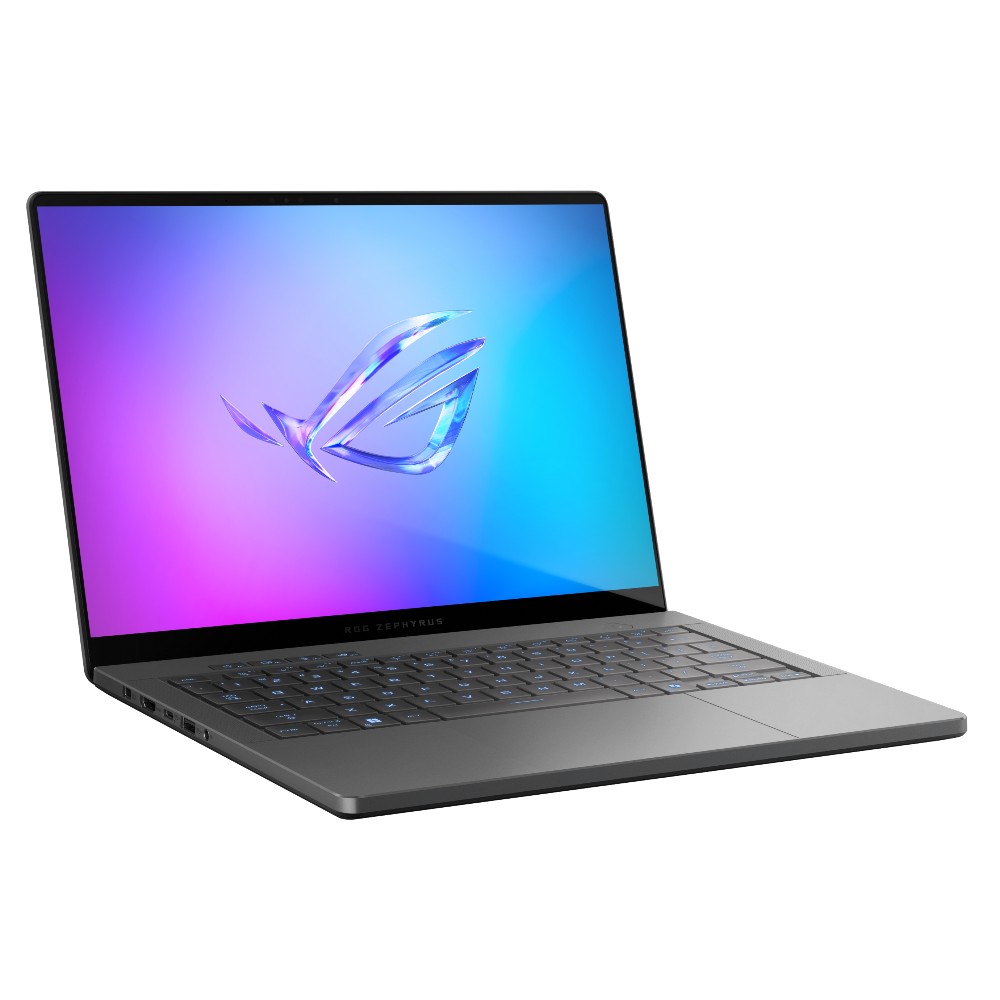
ASUS took the winning formula of last year's redesigned ROG Zephyrus G14 and made it more powerful and intelligent than ever before — at the expense of added cost and a few millimeters of added thickness, which does noticeably impact the design. Fortunately, ASUS refreshed last year's laptop with some new hardware, too, giving us two great options for 2025.

Zachary Boddy (They / Them) is a Staff Writer for Windows Central, primarily focused on covering the latest news in tech and gaming, the best Xbox and PC games, and the most interesting Windows and Xbox hardware. They have been gaming and writing for most of their life starting with the original Xbox, and started out as a freelancer for Windows Central and its sister sites in 2019. Now a full-fledged Staff Writer, Zachary has expanded from only writing about all things Minecraft to covering practically everything on which Windows Central is an expert, especially when it comes to Microsoft.
You must confirm your public display name before commenting
Please logout and then login again, you will then be prompted to enter your display name.
